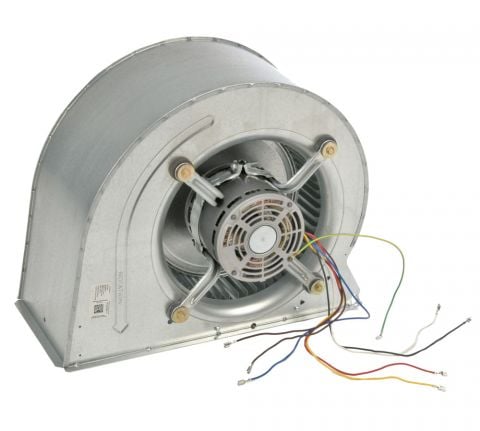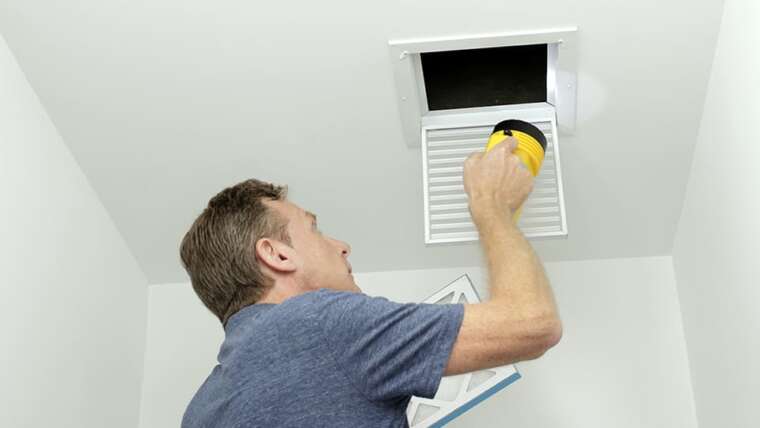
Your furnace’s blower motor is a crucial part of your home’s heating system. It ensures warm air reaches every corner of your space. But when it collects dust and debris, its performance drops — and so does your comfort. Homeowners often ignore the issue until they notice strange smells, weak airflow, or rising energy costs.
In this guide, we’ll explain how to recognize a dirty motor, walk through the cleaning process, and help you decide when it’s best to call in a professional.
What Does the Blower Motor Actually Do?
This component powers the fan that distributes warm air from your furnace into your home. If it runs smoothly, your heating system works efficiently. But once dirt coats the motor, fan blades, or housing, the system struggles — leading to uneven heating and potential mechanical failure.
Some motors are direct drive (built into the blower assembly), while others are belt-driven. Regardless of design, regular care helps keep things running efficiently.
Key Signs Your Blower Needs Cleaning
A dusty motor affects airflow and energy use. Look for:
- Inconsistent warmth from vents
- A burnt or musty odor when your furnace starts
- Squeaking or grinding sounds during operation
- Longer cycles or slower heating
- Unusual dust buildup near vents or filters
These are clear indicators it’s time to clean the unit.
Why You Shouldn’t Ignore the Problem
Blower motor in furnace not working? A clogged blower can:
- Overheat and damage itself
- Distribute allergens and dust into your living space
- Drive up your energy bills
- Add strain to your furnace, reducing its overall life span
- Increase the risk of mechanical faults
Over time, minor dust accumulation can lead to major consequences — both for system efficiency and indoor air quality.
How to Clean Furnace Blower Motor: Step-by-Step
Safety first: If you’re unsure, it’s safer to contact a qualified HVAC technician.
 But if you’re comfortable with DIY tasks, here’s a basic outline on how to clean the blower motor on furnace:
But if you’re comfortable with DIY tasks, here’s a basic outline on how to clean the blower motor on furnace:
- Turn off power to the furnace at the breaker.
- Open the access panel on the furnace cabinet.
- Take a photo of the blower assembly for reassembly guidance.
- Loosen mounting screws and remove the blower unit carefully.
- Use a vacuum and soft brush to clean fan blades, housing, and motor vents.
- Do not use liquids — even slightly damp tools can cause corrosion.
- Clean surrounding areas inside the cabinet for better airflow.
- Reassemble, secure all parts, and restore power.
This general approach works for most common furnaces. However, some models may require removing additional brackets or panels.
What If the Blower Motor in Furnace Is Not Working?
If your fan won’t turn on or you hear buzzing or clicking when it should engage, dirt might not be the only issue. Electrical or mechanical faults, such as worn bearings or a failed capacitor, may be at play.
When the blower motor in the furnace is not working, it’s safest to contact a technician. A proper diagnosis can prevent further damage or unexpected system failure.
When to Leave It to the Pros
You should contact a specialist if:
- The unit is sealed or hard to reach
- You see oil stains or corrosion
- There’s visible damage or burnt wiring
- The system shuts off without warning
- You’ve never had a full inspection
Our team at Promaster offers expert diagnostics, full cleaning, and replacement options if necessary.
How to Prevent Future Problems
Keep your blower clean longer with these simple habits:
- Replace furnace filters regularly (every 1–3 months)
- Use high-efficiency filters in dusty environments
- Keep vents unblocked by furniture or rugs
- Set moderate, stable temperatures on your thermostat
- Schedule professional HVAC tune-ups every year
A little routine maintenance goes a long way in keeping your furnace healthy and efficient.
Conclusion
A dirty furnace blower motormay start as a minor inconvenience, but left unchecked, it can become a serious — and expensive — issue. Whether you choose to tackle it yourself or call the pros, staying proactive will keep your home warmer, your air cleaner, and your furnace working longer.
Need help? Contact Promasterfor expert furnace inspections, blower maintenance, and whole-home HVAC cleaning. We’re here to keep your system running smoothly — all year round.
FAQ: Furnace Blower Motor Cleaning
1. How often should I clean my blower motor?
Once a year is ideal, but more frequent cleaning may be needed if you have pets, allergies, or run the system heavily.
2. Can I clean the motor without removing it?
Only surface dust can be cleared without removal. For full cleaning, the assembly needs to be detached.
3. Is it safe to use compressed air?
Yes, but use it cautiously. It can blow debris deeper into the motor if not directed carefully.
4. Should I lubricate the motor?
Most modern motors are sealed and do not require lubrication. If lubrication ports exist, use manufacturer-recommended oil only.


